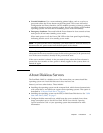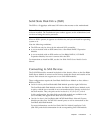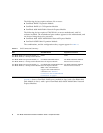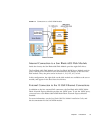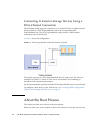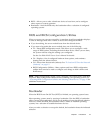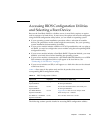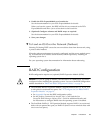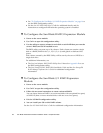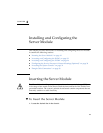
Chapter 1 Introduction 13
Accessing BIOS Configuration Utilities
and Selecting a Boot Device
Because the Sun Blade X6450 is a diskless server, it most likely requires an option
card to connect to its hard drives. In most cases, the option card must be configured
using the BIOS configuration utility before you can install an operating system.
■ If your operating system installation procedure offers a selection of bootable
devices, the procedures in this section might be unnecessary. See your operating
system installation documentation for details.
■ If your server module includes a REM or a PCIe ExpressModule, and you plan to
use RAID, you need to configure the server module using the corresponding BIOS
configuration utility.
■ If your server module includes a Sun Blade RAID 5 Expansion Module, you must
initialize your hard drives before installing the operating system.
■ If your server module is connected to a Sun Blade 6000 Disk Module over a NEM
SAS connector, the eight hard drives will appear to be local drives. See
“Connecting to SAS Devices” on page 7.
■ If your server includes an SSD, it will appear as a disk drive that can be selected
as the boot device.
TABLE 1-2 lists some of the option cards and the keystrokes that access the
corresponding BIOS configuration utility.
The following sections provide details for accessing BIOS configuration utilities.
TABLE 1-2 BIOS Configuration Utilities
Option Card Keystroke Documentation for BIOS Utility
QLogic PCIe
ExpressModule
Ctrl-Q See the documentation that came with your
PCIe ExpressModule.
Emulex PCIe
ExpressModule
Ctrl-E See the documentation that came with your
PCIe ExpressModule.
Sun Blade RAID 5
Expansion Module
Ctrl-A Appendix B or the Sun Intel Adaptec BIOS
RAID Utility User's Manual.
Sun Blade 0/1 G2 RAID
Expansion Module
Ctrl-C Sun LSI 106x RAID User’s Guide.



